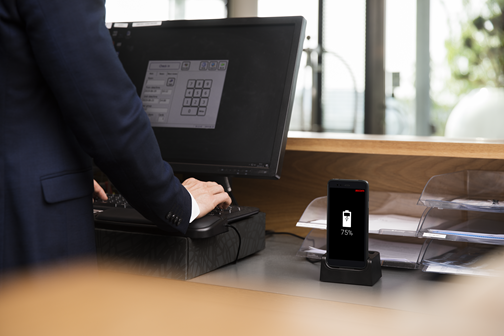Country selector

Corporate
Country Selector: Corporate
Every second counts. When it comes to workplace safety, there are no compromises. One alarm, one measure or one check can be the difference between life and death.

In these cases, the right technology truly makes a difference. But how do you select the most appropriate technology and ensure that it’s used in the right way?
In the ever-evolving landscape of staff safety, a complex dance unfolds. Balancing the importance of safety with the pressures of cost-effectiveness is a continual dilemma. Stringent health and safety regulations demand inflexible compliance, with the specter of legal consequences looming over any breaches.
Neglecting even a single routine site check can send ripples through your organization, compromising insurance coverage and potentially leading to unforeseen financial losses. Even temporary closure, which can literally cost millions. But most importantly, there is always a risk of serious injuries or even deadly consequences.
The catch 22 of workplace safety
Organizations need to invest in new staff safety technology, but they don’t have the budget. That is the very real catch-22 situation that most businesses find themselves in. The only thing they can do is prioritize what they can actually implement at any given time.
This often means managing existing systems while trying to incorporate new and improved technology. Fortunately, there are flexible workplace solutions that are not proprietary. Technology that makes the most of the existing infrastructure and can operate in a shared architecture environment.
Not every new technology is useful
New technology can often seem like a black box. What does it actually do? Will I understand how to use it? And how much will it cost? Lloyd Spindler, Independent Workflow Consultant, believes there is a very clear philosophy in place: “When embracing new technology, Ascom doesn’t rush into it just for the sake of it. Instead, we take the time to understand whether it will truly make a difference and benefit our customers”.
This approach has allowed Ascom to support numerous clients on their technology journey. Regardless of the device, whether it's a pager, a desk phone, a Wi-Fi phone, or a smart device, they all incorporate workplace safety features. Workplace safety functionality is deeply embedded in Ascom's DNA.


Navigating regulatory complexity
Organizations have to deal with adhering to intricate health and safety regulations. By partnering with the right technology providers, organizations can minimize the risk of fines and legal repercussions, ensuring a seamless path to compliance. Moreover, it leads to a safer workplace, preventing deaths or injuries in the workforce.
From reactive to proactive safety
In the world of workplace safety, prioritization is the key to success. Shifting from a reactive to a proactive approach and improving daily processes empowers organizations to address multiple challenges and create a safer, cost-effective future.
A 360° approach to workplace safety
Your new technology should integrate with your entire ecosystem. It is of vital importance that you don’t have standalone technology in place. The more interconnected your technology, the more effective it becomes, and the easier it is for employees to use and maximize its potential.
An example: 5G implementation
Technology assessments need not be time-consuming, and they don't limit us to old technology alone. Consider 5G, for instance; it offers proven value in improving workplace alarm and mobility functions. Its increased data capacity allows for faster transmission of large volumes of data, lower latencies ensure quicker response times, and the enhanced connectivity contributes to a more reliable and seamless communication experience. Even as 5G trends continue to evolve, we're already incorporating many of its features.
For additional insights about workplace safety